
1
Full length view, M95 infantry rifle.
| 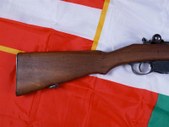
2
View of buttstock.
| 
3
View of action area.
| 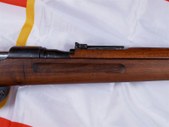
4
Note the finger grooves and sliding rear ladder sight.
|
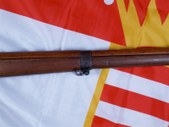
5
Note the long, slender stock design. Also, not the stock band has only a bottom swivel, unlike the cavalry carbines and stutzens.
| 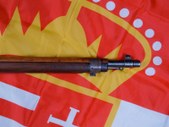
6
Nose cap, stacking rod, and muzzle.
| 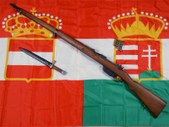
7
Full length view of the rifle, charger clip with 5 8x50R rounds and the issue M1895 knife bayonet.
| 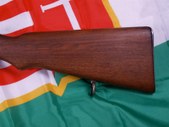
8
buttstock.
|
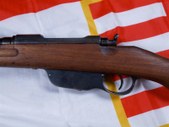
9
Action area.
| 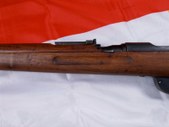
10
Rear sight and finger groove.
| 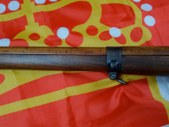
11
stock band, held on with re-inforcing screw.
| 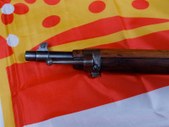
12
stacking rod, nose cap, bayonet lug and muzzle.
|
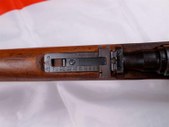
13
Rear sight, ladder type, graduated to 2600 schritt. (Schritt = Pace = 0.75 meters)
| 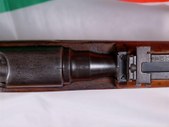
14
Chamber area of the barrel, rear sight and receiver ring.
| 
15
Receiver ring marked "STEYR M95". Note the barrel is proof marked Wn (Austrian Eagle) 16, denoting "Accepted in Wiener-Neustadt near Vienna for the Imperial Army in 1916".
| 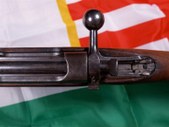
16
Top view of bolt. Note that while in Austro-Hungarian service, M95 bolts were not numbered to the rifles. Numbered bolts were only issued in Bulgaria during the First World War, though most bolts in post-war issued guns and 8x56R conversions often had their bolts serial numbered at that time, usually in electro-pencil.
|
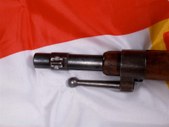
17
Top view of front sight.
| 
18
Buttplate tang. Note that issue markings located there, though the author does not have the translations.
| 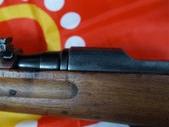
19
Note that the barrel and receiver bear the serial number.
| 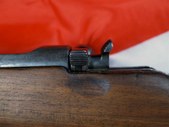
20
Safety and cocking piece.
|

21
Rear sight, quarter-view.
| 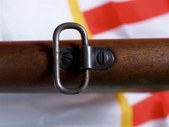
22
Rear sling swivel.
| 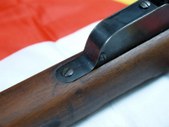
23
Front trigger guard tang.
| 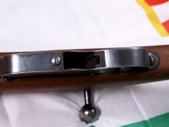
24
Note the opening through which the spent charger clip was ejected from the rifle when empty.
|

